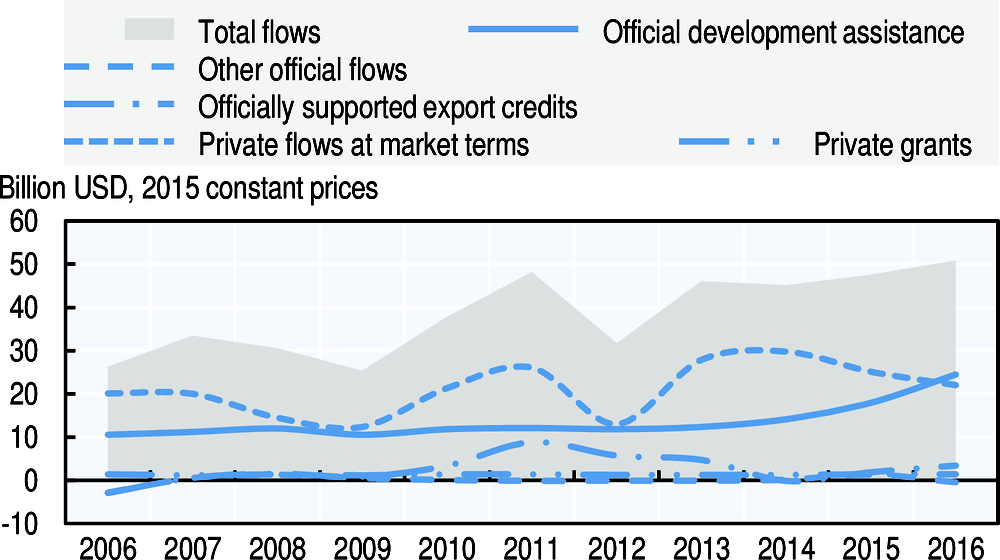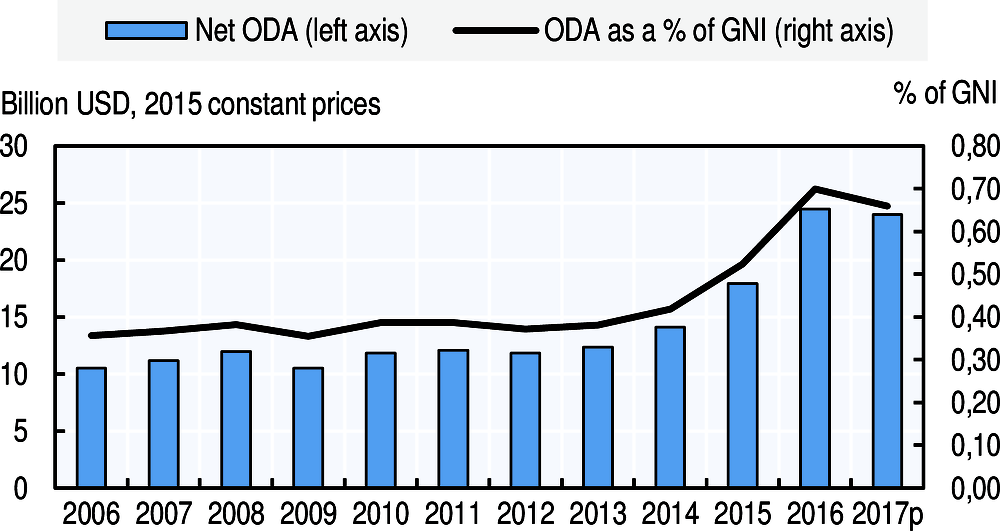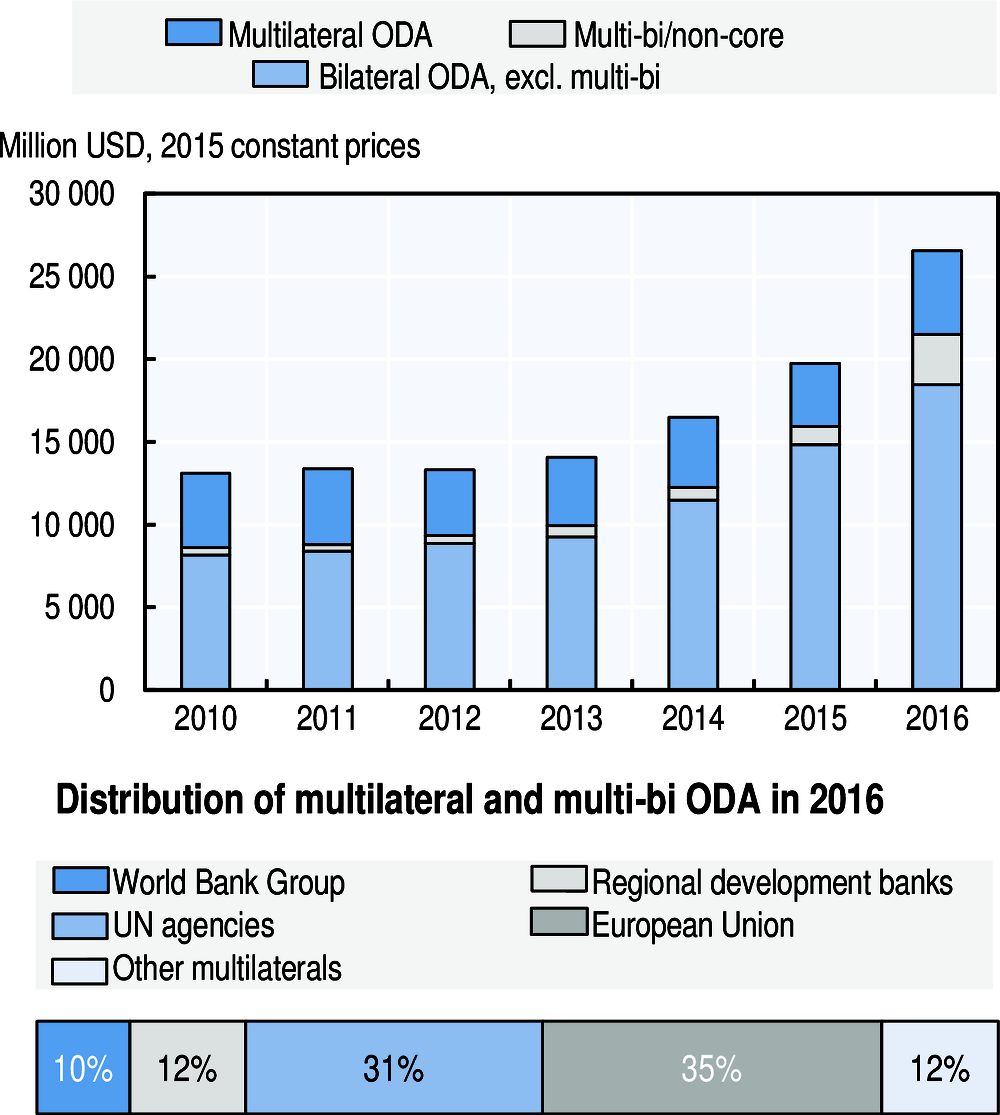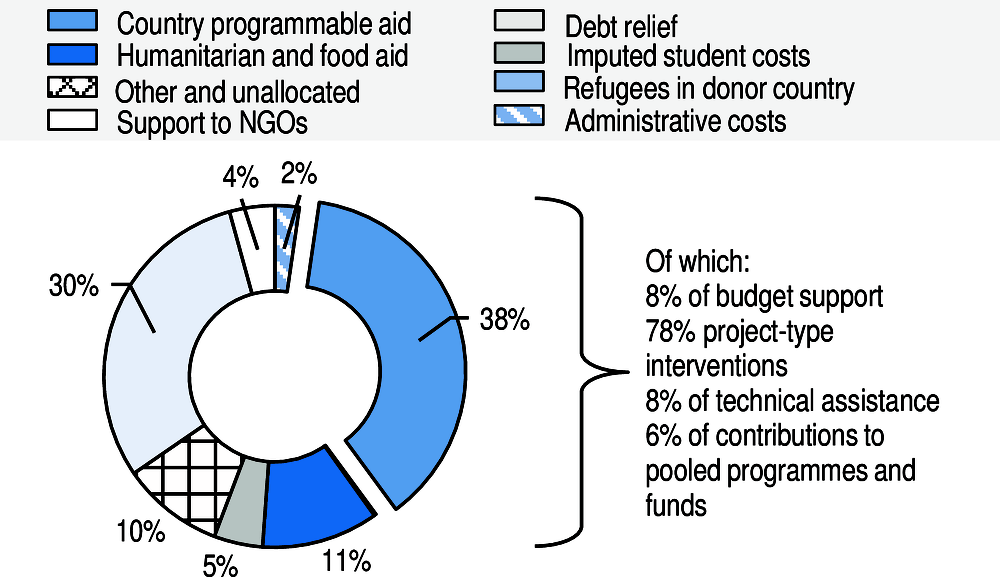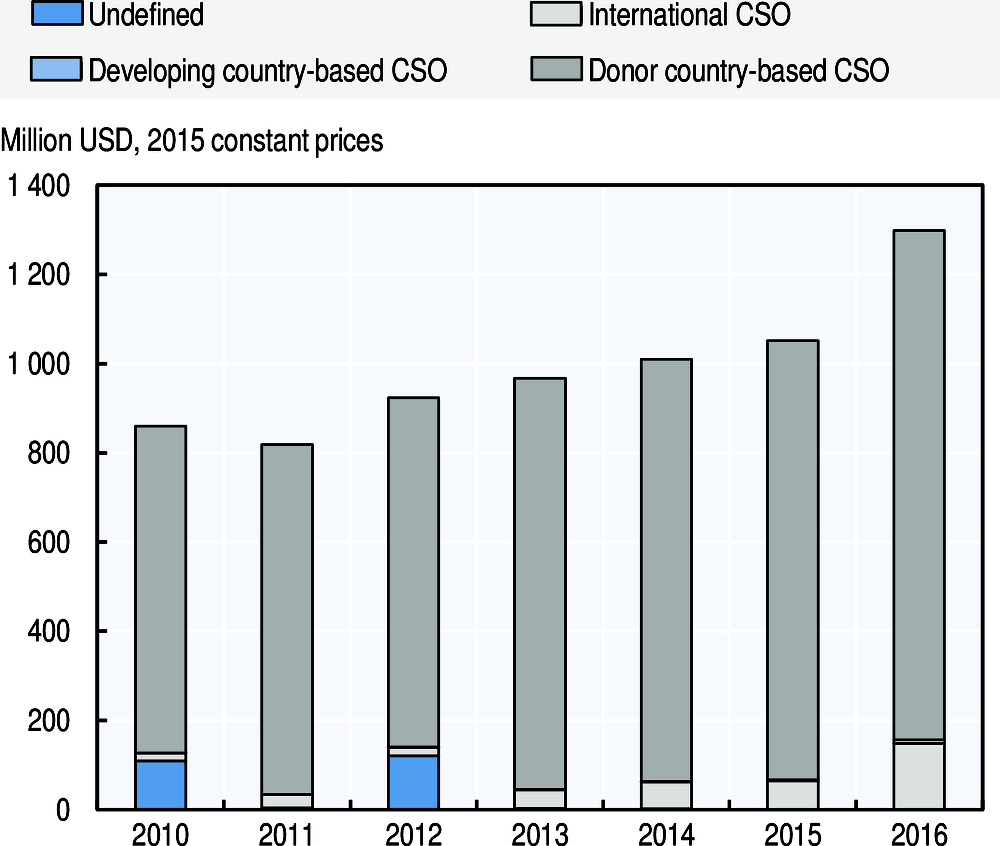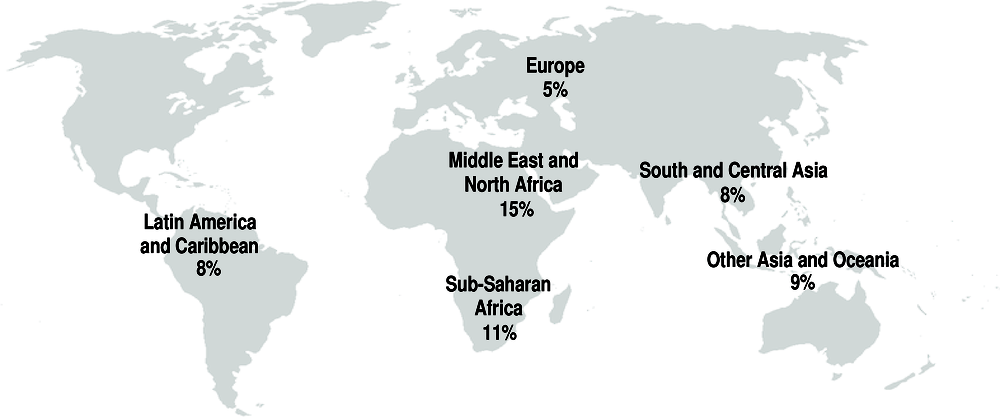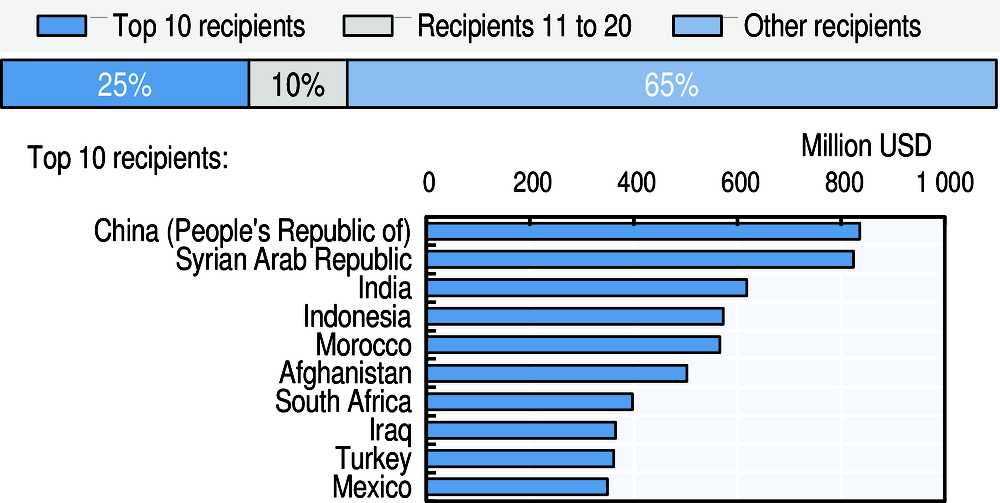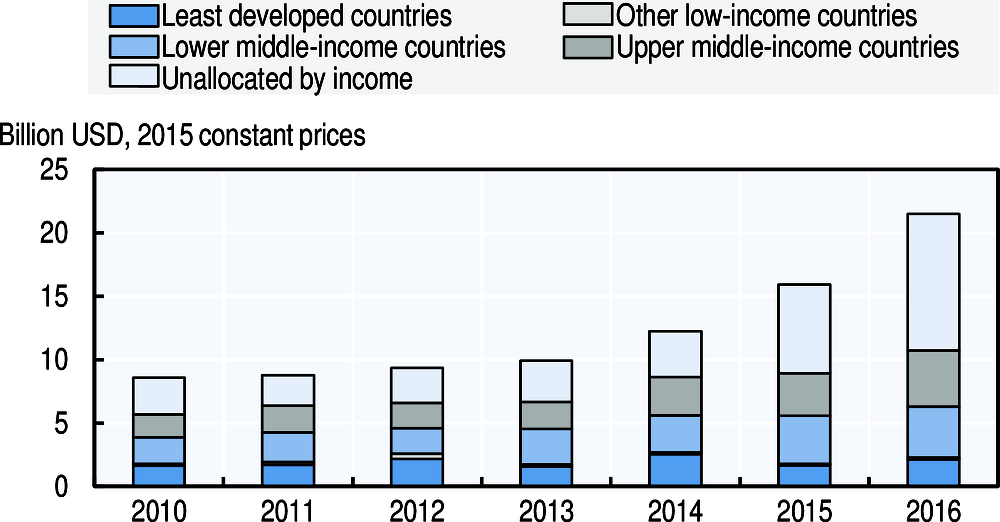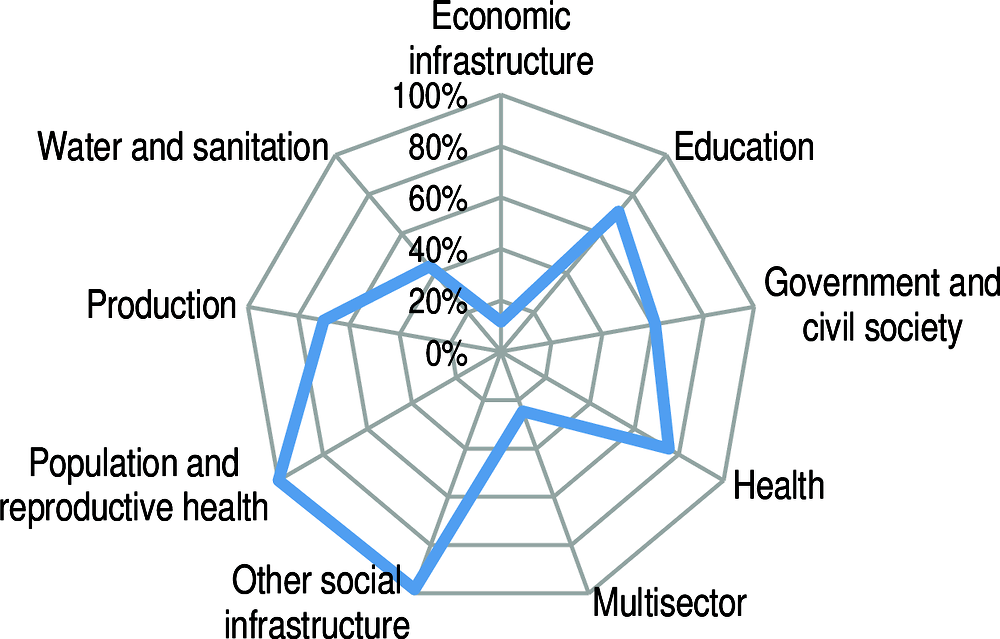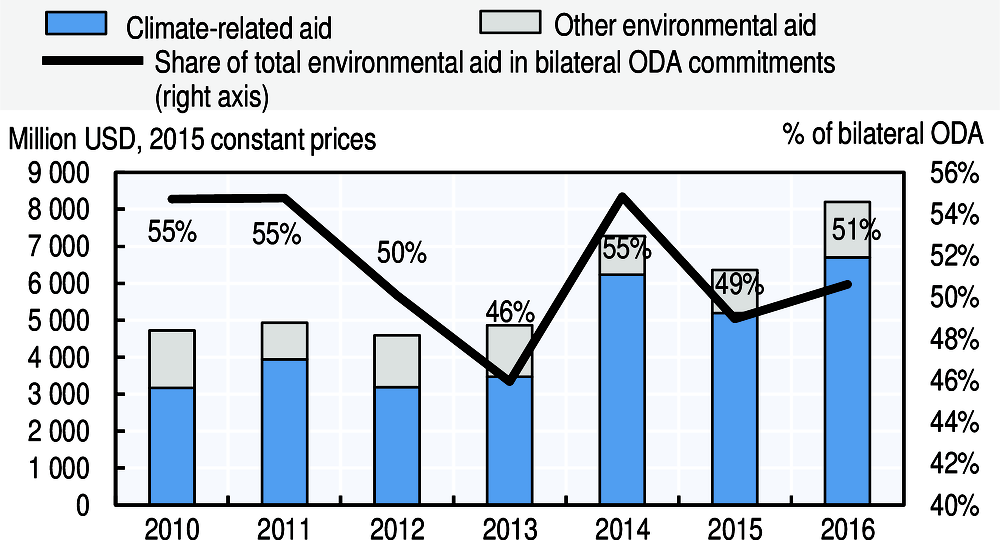Germany
Leaving no one behind: Germany’s approach and priorities
Germany’s Sustainable Development Strategy states that up to 2030 “even greater efforts than before will be required to reach all disadvantaged people and populations and to counteract rising inequality.”
For Germany the focus on leaving no one behind is an opportunity for rights-based approaches to development; to invest in poverty reduction, inclusive growth and social cohesion; and to recognise that the most deprived people need to make faster progress to meet the Sustainable Development Goals. It considers that official development assistance has a comparative advantage in least developed and low-income countries which have less access to other resources and in targeting the furthest behind in ways that other sources of finance, which need a financial return, cannot.
The Federal Ministry for Economic Co-operation and Development (BMZ) is developing a conceptual framework on inequality reduction which will take into account the principle to leave no one behind. BMZ and GIZ use indicators and assessment tools to set priorities, identify needs, target groups and track progress such as political economy analysis, governance, and human rights risk assessments and gender analysis. Low quality information and data gaps on who is left behind, where and why weakens the evidence base for programming. Other challenges include handling the potentially higher cost of reaching poor and vulnerable people in remote, hard-to-access areas, and political and cultural disincentives to include all groups in development.
Financial flows from Germany to developing countries
Germany’s performance against commitments for effective development co-operation
Germany’s official development assistance
In 2017, Germany provided USD 24.7 billion in net ODA (preliminary data). This represented 0.66% of gross national income (GNI) and a 3.6% decrease in real terms from 2016, due to a lower level of in-donor refugee costs. In 2017, in-donor refugee costs were USD 6.1 billion and represented 24.6% of Germany’s total net official development assistance (ODA), compared to 26.6% in 2016.
Germany’s share of untied ODA (excluding administrative costs and in-donor refugee costs) was 86.2% in 2016 (up from 84% in 2015), compared to the Development Assistance Committee (DAC) average of 81.2%. The grant element of total ODA was 89.3% in 2016. Loans amounted to 18.6% of gross ODA.
In 2016, 81% of ODA was provided bilaterally. Germany allocated 19% of total ODA as core contributions to multilateral organisations. In addition, it channelled 14.2% of its bilateral ODA for specific projects implemented by multilateral organisations (multi-bi/non-core contributions).
In 2016, 37.6% of bilateral ODA was programmed with partner countries. Germany’s share of country programmable aid was below the DAC country average (46.8%) in 2016 and project-type interventions accounted for 78% of this aid. Refugees in donor country amounted to 30% of gross bilateral ODA.
In 2016, USD 1.3 billion of bilateral ODA was channelled to and through civil society organisations (CSOs), corresponding to 6% of bilateral aid. Between 2015 and 2016, ODA through CSOs remained stable as a share of bilateral ODA (it was 6.6% in 2015).
In 2016, Germany’s bilateral ODA had a broad geographical coverage. USD 2.4 billion was allocated to sub-Saharan Africa, USD 2.1 billion to the Middle East and USD 1.8 billion was allocated to Far East Asia.
In 2016, 24.8% of bilateral ODA went to Germany’s top 10 recipients. Germany supports 50 partner countries through bilateral programmes and co-operates with an additional 35 through regional and thematic programmes. Nine of the top 10 recipients of German ODA are bilateral or regional and thematic partner countries. In 2016, its support to fragile contexts reached USD 4.1 billion (19% of gross bilateral ODA). Support to fragile contexts consisted mainly of project-type interventions (73%) and contributions to pooled funds (17%).
In 2016, 9.8% of bilateral ODA was allocated to least developed countries (LDCs), amounting to USD 2.1 billion. This is a slight decrease from 10.4% in 2015 and is lower than the 2016 DAC average (21.9%). In 2016, upper middle-income countries received the highest share of bilateral ODA (20.6%), noting that 50.2% was unallocated by income group.
At 0.10% of GNI in 2016, total ODA to the LDCs was lower than the UN target of 0.15% of GNI.
In 2016, 24.3% of Germany’s bilateral ODA was allocated to social infrastructure and services, amounting to USD 6 billion, with a strong focus on education (USD 2.1 billion) and government and civil society (USD 2.1 billion). USD 4.9 billion was allocated to economic infrastructure and services, with a focus on energy generation and supply (USD 2.6 billion) and transport and storage (USD 1 billion). USD 2.5 million was allocated to humanitarian aid. In 2016, Germany committed USD 44 million (0.3% of bilateral allocable aid) to the mobilisation of domestic resources in developing countries. It also committed USD 5.9 billion (35.9% of bilateral allocable aid) to promote aid for trade and to improve developing countries’ trade performance and integration into the world economy.
USD 6.3 billion of bilateral ODA supported gender equality. In 2016, 40.5% of German bilateral allocable aid had gender equality and women’s empowerment as a principal or significant objective, compared with 46.5% in 2015. This was higher than the DAC country average of 36.5% in 2016. A high share of Germany’s aid to population and reproductive health and other social infrastructure focuses on gender.
USD 8.3 billion of bilateral ODA supported the environment. In 2016, the share of German bilateral allocable aid focusing on the environment reached 50.6%, compared to the DAC country average of 33%. Its share of bilateral allocable aid to climate-related aid reached 41.3% in 2016 (USD 6.8 billion), compared to the DAC country average of 25.7%.
Note to reader: Annex B provides “Methodological notes on the profiles of Development Assistance Committee members”.

